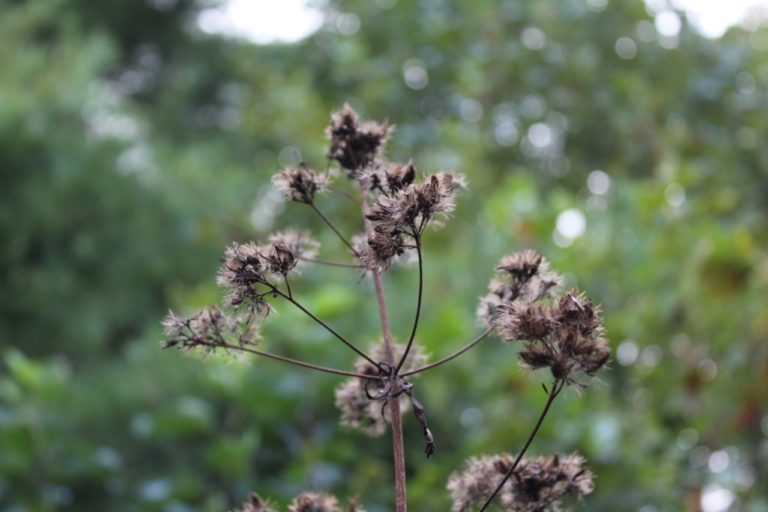Habitat at Home: Leave Seedheads Standing

Autumn usually calls for cleaning up and pruning flower beds for spring blooms. But did you know you can forgo the clipping while still maximizing the benefits of your garden during harsh winter months?
As days grow shorter, nights grow longer, and blossoms fade to brown, the dry remnants of flowering plants called “seedheads”, play a valuable role in the survival of wildlife. Birds, insects, and other tiny critters seek refuge in chilled winter gardens for shelter and seeds found in the central parts of Sunflowers, Coneflowers, or Black Eyed Susans. Various birds will scratch the ground and leaf litter in search of dropped seeds, making these flowers beneficial long after their blooms have faded. Not to mention, blooms that produce copious amounts of seeds can replace purchasing birdseed.
To get the most out of your seed-bearing flowers, allow blooms to grow fully and avoid deadheading, or trimming completely, since it is the dried heads that birds prefer. Deadheading plants before they produce seeds diverts energy from seed production to creating new blooms.
If you enjoy gardening simply for the visual aesthetic it offers, you can opt for leaving seedheads closer to the ground untrimmed rather than a full trim. Another solution could be trimming and stacking them in a pile nearby.
Leaving seedheads standing can also add winter interest to your landscape. Although winter gardens may not look as bright as summer gardens, they do take on their own special range of exciting hues. As colder weather approaches, watch your garden transform into subtle purples, pinks, reds, golds, browns, and tans. Leaving the seedheads be not only offers a unique and striking structure to your garden, but allows you to admire the late-season beauty while also benefiting crucial wildlife.

This fall, ditch the pruning shears and leave it to the birds! Live more sustainably by managing your space in a way that allows wildlife to thrive while increasing biodiversity. Embrace your gardens growth and decay while appreciating the interesting forms and subtle hues of plants as they finish their seasonal cycles. Messy and unkempt can be good, as this is nature’s way!
Introduce a variety of native plants to your landscape that not only look good but double as food!
7 Great Seed Producing Plants for Birds
- Purple Coneflower
- Swamp Sunflower
- Joe-Pye Weed
- Black-eyed Susan
- Ironweed
- Bee Balm
- Green-headed Coneflower
Habitat at Home is a monthly segment dedicated to providing you with tips to make your yard and home a better habitat for native plants, animals, and insects. Written by Rachel Hess.

